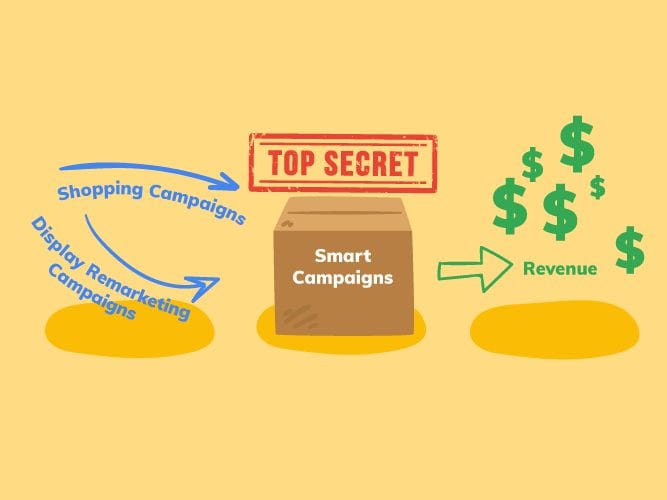Are Google Shopping Smart Shopping Campaigns a Good Idea?
Smart Shopping campaigns are the simplest, most hands-off form of Google Shopping/Display campaigns. These undemanding, all-in-one campaigns are made for businesses that want to spend as little time as possible managing an account. How do you decide when to use Smart Shopping ads? I would argue never. While they can seem appealing, especially to small businesses or busy advertising managers, I take a few issues with these campaigns.

Zero Spend and Revenue Visibility

First, they combine shopping campaigns & display remarketing campaigns with no real differentiation. This means not only are you not controlling how much you are spending on Google shopping versus display efforts, but you also have zero visibility into how much you spend on each or how much revenue came from each. At a very basic level, this makes proper attribution and therefore assessment of success impossible—all clicks are not created equal in terms of attribution & incrementally.
Display remarketing campaigns solely target people who are currently or have previously considered purchasing from you and may have purchased from you regardless of that click. On the other hand, shopping campaigns tend to drive substantial numbers of brand new users/customers, making them more incremental to a business. Each type of targeting has its own advantages—businesses need to close sales with people considering purchasing in addition to driving new traffic—but the two types of campaigns are very different and shouldn’t follow the same attribution model.

Lack of Control

Beyond that, there is an overall lack of control over the campaigns, your ads, and their spend. You are unable to add negative keywords or push on particular products based on shifting margins or an excess of inventory—extremely useful levers in standard shopping campaigns. Want to treat users already searching for your brand name differently than a high funnel query? Do not count on it. Want to treat existing customers as a different segment compared to new customers? Good luck. When you use Smart Shopping ads, you won’t have the insights needed or the ability to make that kind of incremental optimization in your account.

Recommendations
I could go on here, and this really does not even delve into Google Ads’ reported performance of these campaigns (which in my experience is lackluster), but to answer the question “Are smart shopping ads a good idea?”, I think the inability to have these campaigns reflect actual business interests combined with a lack of adequate reporting is enough to make any retailer think twice.
For the advertiser who does not have the time to actively manage an account nor the budget to justify an agency or third-party tool, I recommend trying out a standard shopping campaign with an automated bid strategy. Keep in mind, you’ll still want to watch these campaigns somewhat closely—because spend can get out of hand fast—but automated rules and scripts can help with some of the heavy lifting in an account, with much fewer drawbacks than a Smart Shopping campaign.
If you want to learn more about different types of automation in shopping campaigns and how they might work for your business, read our whitepaper “Can’t Trust the Machines: The Trouble with Automation and Google Ads”.








